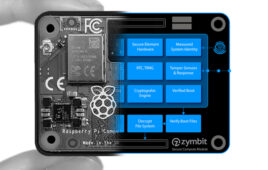Most of us carry smartphones and some of us wear smartwatches. Can smart clothes be close behind?
Researchers at UBC Okanagan’s School of Engineering think so. They have developed a low-cost sensor that can be interlaced into textiles and composite materials. The researchers believe such a sensor could lead to the development of smart clothing that can monitor human movement.
A microscopic sensor embedded into the fabric detects the wearer’s movement through the stretching of the woven yarns, which are treated with graphene nanoplatelets that can read the body’s activity, explains engineering professor Mina Hoorfar.
“Microscopic sensors are changing the way we monitor machines and humans,” says Hoorfar, lead researcher at the Advanced Thermo-Fluidic Lab at UBC’s Okanagan campus. “Combining the shrinking of technology along with improved accuracy, the future is very bright in this area.”
The technology relies on the principle of piezo-resistivity—an electromechanical response of a material when it is under strain. By detecting piezoresistive changes, the sensors are able to detect minute human movements and can be used for heart rate monitoring or temperature control, explains Hoorfar.
Hoorfar’s research demonstrates the potential of a low-cost, stretchable yarn sensor that can be woven into spandex material and then wrapped into a stretchable silicone sheath. This sheath protects the conductive layer against moisture and other environmental variables, while allowing for the creation of washable wearable sensors.
The development of smart fabrics for athletic clothing is one potential application, but there are other uses, according to UBC Professor Abbas Milani, director of the UBC Materials and Manufacturing Research Institute. This includes monitoring deformations in fiber-reinforced composite fabrics now used in automotive, aerospace, and marine manufacturing.
The low-cost, stretchable composite sensor has also shown high sensitivity and can detect small deformations such as yarn stretching, notes Milani.
Researchers are investigating further improvements in the sensor’s accuracy by fine-tuning its material blend, and improving electrical conductivity and sensitivity. They envision these enhancements making it possible to capture major flaws like ‘fiber wrinkling’ during the manufacturing of advanced composite structures, such as those used in airplanes or car bodies.
Filed Under: Product design




